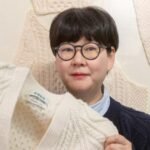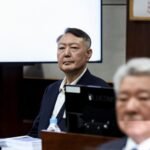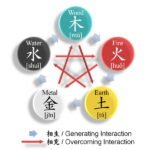
GYEONGJU – Nvidia Corp. has agreed to supply 260,000 units of its high-end graphics processing units (GPUs) to South Korea’s government and four of its largest conglomerates by 2030.
The deal, valued at up to 14 trillion won ($9.8 billion), will strengthen technology ties between the US chip designer and one of Asia’s most advanced manufacturing economies.
Under the agreement, announced on Friday on the sidelines of the APEC Summit in Gyeongju, Nvidia will prioritize deliveries of its latest AI accelerators to Seoul’s Ministry of Science and ICT, Samsung Electronics Co., Hyundai Motor Co., SK Group and Naver Corp.
The move comes as countries scramble to secure scarce computing power, essential to developing generative artificial intelligence models and industrial automation systems.

South Korean President Lee Jae Myung met with Nvidia chief executive Jensen Huang at the summit venue, joined by Samsung Chairman Lee Jae-yong, Hyundai Motor Chairman Chung Euisun, SK Group Chairman Chey Tae-won and Naver founder Lee Hae-jin.
The gathering marked the most comprehensive private–public AI partnership yet between Korea and a US tech leader.
“The Republic of Korea is an ideal testbed for the age of AI,” Lee told Huang, pledging government support for Nvidia’s investment in Korea.
Huang responded that “Korea has the perfect conditions to become a global leader in manufacturing AI.”
NATIONAL AI INFRASTRUCTURE DRIVE
Of the total 260,000 GPUs, about 50,000 units will be allocated to the Korean government to power sovereign AI foundation models and a new national AI computing center.

The remaining 210,000 units will go to the four conglomerates, which plan to deploy the hardware across industries from semiconductor fabrication and automotive design to digital twins and robotics.
Samsung intends to use Nvidia chips in its so-called “AI factory” to optimize semiconductor production.
SK Group will integrate the GPUs into digital twin platforms and AI agents to streamline research and development.
Hyundai Motor plans to harness the processors for autonomous driving and robotics systems, while Naver will use them to train its large language models, including HyperCLOVA X 2.0.
Officials said the new allocation dwarfs Korea’s current state holdings of 13,000 GPUs and could power as many as half a dozen hyperscale data centers.
That would make the country the world’s third-largest GPU holder after the US and China, a symbolic milestone toward Lee’s pledge to make Korea one of the “top three AI nations.”

“Securing GPUs has become a proxy for measuring a country’s AI competitiveness,” said a Seoul-based industry official. “This agreement effectively puts Korea on the AI map alongside the US-led alliance.”
STRATEGIC ALIGNMENT IN AI RACE
Tech companies and governments worldwide have struggled to procure Nvidia’s chips amid soaring demand for its H100, H200 and upcoming B200 models.
Each GPU can cost tens of thousands of dollars, depending on configuration.
Industry estimates suggest the Korean deal’s total value could reach 14 trillion won, assuming full delivery by 2030.

For Washington, the partnership reinforces the emerging “AI alliance” network it is building with trusted partners, including Japan, the UK and South Korea, to counter China’s ambitions in advanced computing.
Seoul has already deepened collaboration with BlackRock and OpenAI, with President Lee meeting CEOs Larry Fink and Sam Altman in recent months to discuss AI investment.
INDUSTRIAL RIPPLE EFFECTS
Analysts expect the influx of Nvidia processors to spur a chain reaction across Korea’s tech sector.
SK Hynix Inc., already a key supplier of high-bandwidth memory (HBM) for Nvidia chips, is likely to expand production of its next-generation HBM4 modules.
Demand is also set to rise for AI server components, power systems and cooling equipment supplied by smaller domestic firms.

“Beyond a simple purchase, this is about anchoring the next wave of AI infrastructure in Korea,” said a senior industry executive. “It’s a geopolitical as much as an industrial statement that Korea is part of the US-led AI bloc.”
The announcement capped a week of AI diplomacy at the APEC summit, where leaders from Seoul and Washington sought to align strategies on emerging technologies.
As global competition for computing power intensifies, Korea’s partnership with Nvidia marks both an economic opportunity and a geopolitical commitment – one that could define the next chapter of the country’s digital transformation, analysts said.















